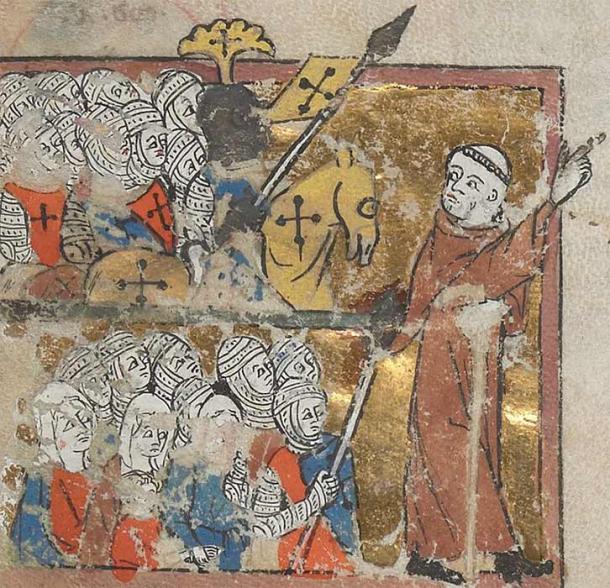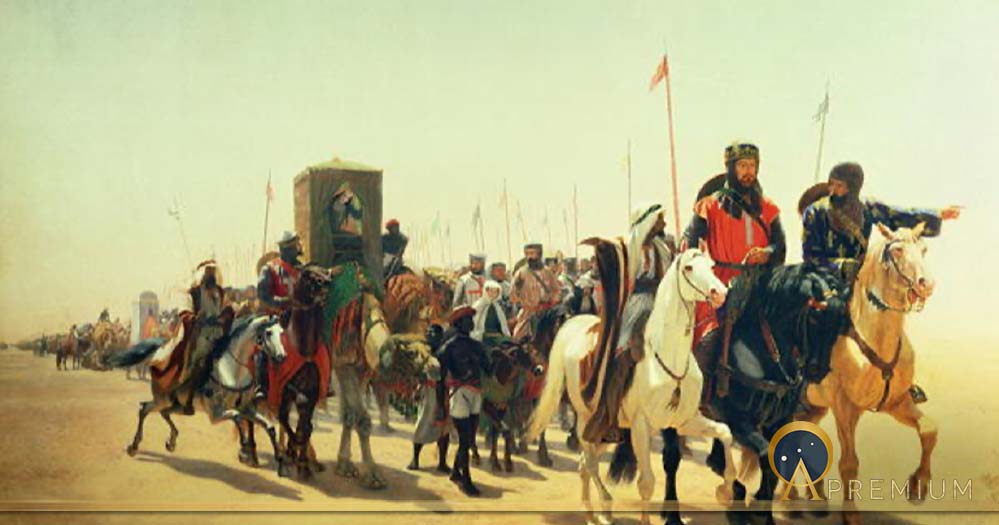Medieval Mediciners, Administering Miraculous Cures During The Crusades
History fails to record the names of any of the mediciners who accompanied the chivalric orders on their Crusade, but when each of the noblemen of western Europe pledged their oath to take up the cross and follow their king to the Holy Land, they were bound by their allegiance to the crown to provide an agreed number of men-at-arms to fight at their side. As well, they were obliged to take with them sufficient mediciners to care for their men, who were often accompanied by their wives and children, together with a good number of peasants and serfs seeking their fortune in foreign lands. These mediciners were further required, should the need arise, to attend to not only the fighting men of the remainder of the Crusader army but also the medical need of the enemy and whatever civilians might be caught up in the conflict.

Healing the sick, fresco by Domenico di Bartolo. Sala del Pellegrinaio (hall of the pilgrim), Hospital Santa Maria della Scala, Siena. (Public Domain)
The Crusading mediciners were divided into two groups, those of physicians and surgeons, and it was suggested that each would be accompanied by a number of assistants and nursing staff, usually made up of volunteer nuns and the wives and daughters of the mediciners themselves.
Monastic Healers And Their God-Forbidding Dilemma
At the time of the First Crusade there were no formally trained and qualified medical practitioners, and medical care for the noble families and serfs alike would have been provided by local wisewomen, barber-surgeons, and the brothers at the nearest monastery. The nearest comparison to the modern-day physician would have been the brother herbalist practicing at one of the many Catholic monasteries that had become a prominent feature of the English landscape. There was no formal academic training available, and subsequently no universal body of medical knowledge or ethics to be adhered to. The monastic brothers would have acquired their healing knowledge from their co-brethren, from the local folk healers they often worked with, and by trial and error, frequently at the cost of their patient's well-being.

Peter the Hermit, leading the Pope’s or First Crusade. Mminiature from Egerton Manuscript 1500, France (c. 1325) ( (Public Domain)
At the time of the call to arms for the First Crusade, western Europe was in the depths of the Dark Ages, a time of complete stagnation for learning, the arts, and scientific advancement. This period was particularly damaging to any medical advancement, and nothing had changed in the realm of medical practice for hundreds of years.
Like this Preview and want to read on? You can! JOIN US THERE ( with easy, instant access ) and see what you’re missing!! All Premium articles are available in full, with immediate access.
For the price of a cup of coffee, you get this and all the other great benefits at Ancient Origins Premium. And - each time you support AO Premium, you support independent thought and writing.
Extract from The Healing Practices of the Knights Templar and Hospitaller: Plants, Charms, and Amulets of the Healers of the Crusades InnerTradtitions
Jon G. Hughes the director of the Irish Centre for Druidic Practices and the author of A Druid’s Handbook to the Spiritual Power of Plants and The Druidic Art of Divination, amongst other titles. His latest book is The Healing Practices of the Knights Templar and Hospitaller: Plants, Charms, and Amulets of the Healers of the Crusades
Top Image: Richard the Lionheart on his way to Jerusalem, James William Glass (1850) (Public Domain)
By Jon G Hughes


















